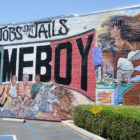
ORLANDO, Fla, - Frontline practitioners working on gang prevention, intervention and suppression are gathered this week for the National Gang Symposium in Orlando, Fla. For prevention, think of the Boys & Girls Club. For intervention, think of the Los Angeles-based Homeboy Industries, whose motto is “nothing stops a bullet like a job.” And for suppression, well, of course, think of the police. The number crunchers from the National Gang Center, using their own just released data, are telling symposium attendees today that gangs remain a substantial problem in the nation. However, gang levels are lower than the peak levels in the mid-1990s, and law enforcement agencies reported gang activity in their jurisdictions at about the same levels for five straight years – all this during a time when overall violence is way down.



